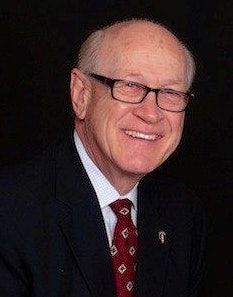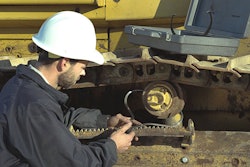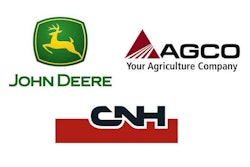 Credit: Neal Patel/Flickr
Credit: Neal Patel/FlickrThere’s a story behind this heading that contains a powerful message about leadership. Although it happened several years ago, the lesson learned from this experience is still relevant for today’s business world.
It was the mid-1980’s and I had just accepted a new position as managing director of Dresser Industries, Europe, Africa and Middle East (EAME) Division with its headquarters in Heidelberg, Germany. The parent company, a diversified conglomerate supplying oil field equipment and services, fuel station pumps, construction and mining equipment, etc. was located in Dallas. The company had just acquired International Harvester’s global construction equipment business (the Payline Division), positioning it as the world’s third-largest supplier of construction equipment.
My new boss was senior vice president and a member of the company board located in Dallas, more than 5,000 miles and seven time zones away from Heidelberg. I had just returned from Dallas where I received my mandate, “consolidate all European assets into Heidelberg and set-up a fully functional autonomous division producing and selling a full range of products and services to dealers and customers in Greater Europe, Africa and Middle East countries. Get this done quickly and profitably…” I am paraphrasing, but this is pretty much what I was told. No other measurable goals or timelines. “Just go get it done!”
What came next was all about collaborative leadership; vision, passion, leading by example and taking responsibility for the mission.
Pressure mounts behind a turnaround
The first 18 months or so involved negotiating the closing of operations, moving assets and intellectual property from France, the United Kingdom and locations in Germany to Heidelberg, assembling a core management team of diversified talent and charting the course for our mission. During this period the division was losing money at about the rate of $1 million a month. The pressure was mounting from Dallas.
Things began to improve in the next year. Consolidation was complete and stability was beginning to have a positive effect on the bottom-line. We had turned the corner from losses to breaking-even.
As the business began to improve so did Dallas’s expectation for even better, and, of course, faster results. As the management team began to jell, I began to depend more on the individual department heads. I spent more time with them on strategic matters and less time on day-to-day departmental issues. By now, we were two-plus years into the mission and even though the division’s financial performance was improving, it was not good enough for my boss. I was engaged in a constant dialogue with him and putting together proposals to improve performance.
One such proposal involved an infusion of fresh capital for new and improved products, manufacturing equipment, accounting software and hardware, etc., which would result in improved productivity, lower direct and indirect labor cost, greater efficiency, increased sales and lower overhead. Combined, these would substantially improve the bottom line. The plan was approved on the premise that it would be funded entirely from positive cash flow generated by the division. Dallas was not going to provide a dollar of fresh capital.
This seemed like an impossible task. The division was not generating enough cash from operations to fund the re-sizing plan and capital expenditures contemplated. Where was the money going to come from?
Responsibility to lead
It was my responsibility to figure this out. I began by leading a series of confidential management team meetings to determine the feasibility of raising the capital internally. The team came to the conclusion that the best way to raise capital was to sell a portion of the division’s property to the City of Heidelberg and re-size the business consistent with the market and sales projections based on products that were marginally competitive. The sale would give us immediate cash for the capital improvements; fund the re-sizing and redundancy program (thus satisfying the union) and fund engineering development of new and improved products. My boss supported the plan and convinced the board to let us proceed.
Everything was going as planned. The sale to the City of Heidelberg was completed. The capital improvements were underway and the re-sizing was announced to the employees.
During this period the union was demanding higher wages, more vacation time and fewer working hours, all of which was a way for the union to slow-down the process and retain jobs. From the start, I stepped back from direct negotiations with the union leaving it to the department heads to negotiate a settlement. This was a mistake. The union viewed it as a sign of weakness by the company and me, dragging out negotiations. Tension was building, the re-sizing timeline was slipping and pressure from Dallas was coming daily.
Don’t get locked in your office
Often times I would go into the office early and close my door to get some quiet time before the workday began. One morning during the union negotiations, I arrived to my office at around 7 a.m., closed my inner door and began reading reports and preparing for one of my many calls with Dallas. Suddenly I heard the outside door to my office close with a bang and the click of a key locking the door. I then heard people shouting and chanting outside my office windows.
I jumped to the window to find that the union had organized a wildcat strike and union employees were carrying placards with anti-company slogans to protest the re-sizing plan. They were picketing the main entrance and blocking all traffic in and out of the property. The police had arrived and we were on lock-down.
I moved quickly to the door only to find that I had been locked in my office. The keys had been taken and there was no way for me to get out. My staff was not able to enter the property. The police advised me they would send someone to get me out. Eventually, the union allowed my administrative assistant into the office who was able to free me with her spare key. By this time the damage was done. The local press had a field day with the whole confrontation, which didn’t make for good relations with the community and the City of Heidelberg.
The next few months were spent negotiating a new labor agreement and executing the redundancy plan while implementing the various capital improvements and launching new and improved products. By the end of 3 and 1/2 years the division had been re-sized, employee confidence restored and bottom-line earnings were exceeding plan.
Lesson learned?
Leadership is about taking responsibility, leading by example, having the courage of your convictions to do what’s right and the passion and energy to lead. Regrettably, I took my eye off the ball by avoiding the union negotiations. I fumbled the pass (messages from my staff) and the other team recovered and scored.
In the beginning, I took the time to assemble a very good management team. Later, when I should have been more attentive and leading by example, I delegated the responsibility to others, which was seen by the union as a sign of weakness.
I should have been engaged face-to-face with the union leading the negotiations, which may have avoided delays, disruptions, distrust and getting locked in my office. I learned some valuable lessons from this experience, which served me well later as president of Eagle Picher Minerals. Don’t get locked in your office!
About the Author












